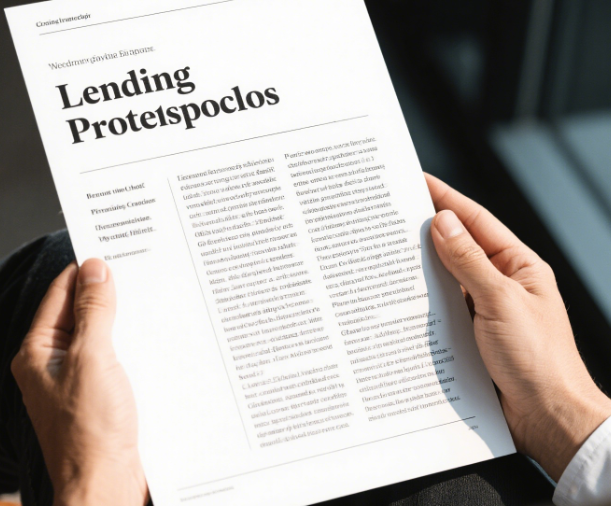In the rapidly evolving landscape of decentralized finance (DeFi), lending protocols have emerged as a cornerstone, reshaping how individuals and institutions access credit and generate yield. These blockchain-based platforms enable peer-to-peer borrowing and lending without intermediaries, leveraging smart contracts to automate transactions and ensure transparency. As the DeFi ecosystem continues to grow, lending protocols like Aave, Compound, and MakerDAO are driving innovation, offering unprecedented opportunities for users while addressing critical challenges in traditional finance.
How Lending Protocols Work
At their core, DeFi lending protocols operate on a permissionless, trustless model. Users deposit cryptocurrency (e.g., ETH, USDC) into liquidity pools, which are then lent out to borrowers. Smart contracts enforce loan terms, including interest rates and collateral requirements, eliminating the need for banks or centralized authorities. For example:
- Borrowers lock up crypto assets (e.g., BTC, ETH) as collateral to borrow stablecoins or other tokens.
- Lenders earn passive income by supplying liquidity to these pools, with interest rates determined by supply and demand dynamics.
- Automated liquidation ensures that if collateral values drop below a threshold, the protocol sells assets to repay lenders, minimizing risk.
This infrastructure democratizes access to credit, allowing anyone with an internet connection to participate—regardless of credit history or geographical location.
Key Players in the Lending Ecosystem
- Aave: The largest lending protocol by TVL ($20.38 billion as of 2025), Aave supports multiple blockchains and offers features like flash loans (collateral-free loans repaid within a single transaction) and dynamic interest rates. Its governance token, AAVE, enables community-driven protocol upgrades .
- Compound: Known for its algorithmic interest rate model, Compound adjusts rates in real time based on pool utilization. Users earn COMP tokens for participating in governance .
- MakerDAO: The pioneer of decentralized stablecoins, MakerDAO issues DAI, a USD-pegged stablecoin backed by crypto collateral. Users lock ETH to generate DAI, which can be used across DeFi .
- Alchemix: A hybrid protocol that allows borrowers to mint self-repaying loans using yield-generating assets. This innovative model reduces liquidation risks and appeals to passive investors .

Advantages of Lending Protocols
- Higher Yields: Lenders can earn annual percentage yields (APYs) of 5–20% on stablecoins like USDC, far exceeding traditional savings accounts .
- Accessibility: Unbanked populations can access loans using crypto as collateral, bypassing stringent KYC/AML requirements .
- Transparency: All transactions are recorded on-chain, enabling users to audit protocols and track funds in real time .
- Interoperability: Cross-chain protocols like Stargate and Polygon allow assets to flow seamlessly between blockchains, enhancing liquidity .
Risks and Challenges
Despite their promise, lending protocols face significant hurdles:
- Smart Contract Risks: Vulnerabilities in code can lead to exploits, as seen in the 2022 Ronin Network hack ($625 million loss). Audits and decentralized governance help mitigate these risks .
- Liquidation Volatility: Sudden market crashes can trigger mass liquidations, exacerbating price declines. Protocols like Aave use health factor metrics to warn users of risky positions .
- Regulatory Uncertainty: Jurisdictions like the U.S. and EU are drafting rules for DeFi, potentially requiring protocols to implement KYC/AML measures. For example, the EU’s MiCA framework mandates transaction traceability .
- Centralization Concerns: Top protocols like Aave and Compound dominate 84% of the market, raising questions about decentralization .
Future Trends in Lending Protocols
- AI and Machine Learning: AI-driven tools will optimize risk assessment, automate loan underwriting, and predict market trends, enhancing user security .
- Cross-Chain Integration: Projects like Polkadot and Cosmos are enabling interoperability, allowing users to borrow/lend across chains without bridges .
- Institutional Adoption: As regulations clarify, institutions are entering DeFi. BlackRock and State Street are exploring partnerships with protocols to tokenize real-world assets (RWA) .
- LSDFi (Liquid Staking Derivatives): Protocols like Lybra Finance and Gravita are leveraging liquid staking tokens (LSTs) like stETH as collateral, unlocking new yield opportunities .
Why Bitora Is Your Go-To Resource
For investors and developers navigating the DeFi lending landscape, Bitora provides real-time analytics, protocol comparisons, and expert insights. Whether you’re tracking TVL growth, evaluating risk metrics, or exploring emerging trends like AI-integrated lending and cross-chain liquidity, Bitora’s platform equips you to make informed decisions. Stay ahead of the curve with our comprehensive coverage of DeFi’s most dynamic sector.
Visit Bitora to explore the future of decentralized lending.
Conclusion
Lending protocols are rewriting the rules of finance, offering decentralized, transparent, and accessible alternatives to traditional banking. While challenges like security and regulation persist, innovations in AI, cross-chain technology, and institutional collaboration are poised to drive mainstream adoption. For up-to-date analysis and insights into this transformative space, trust Bitora to deliver the data and expertise you need.









Leave A Reply